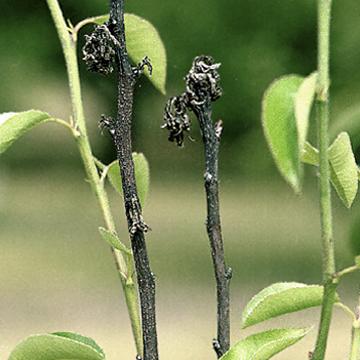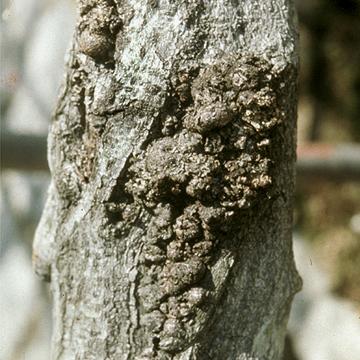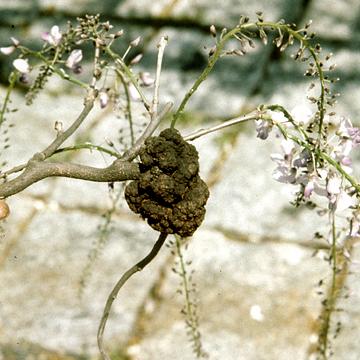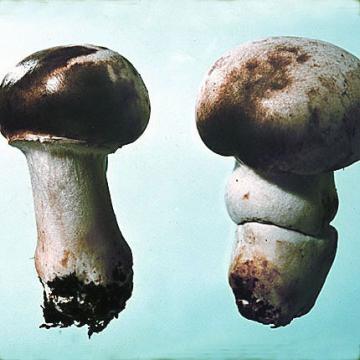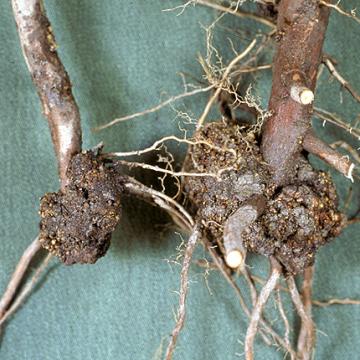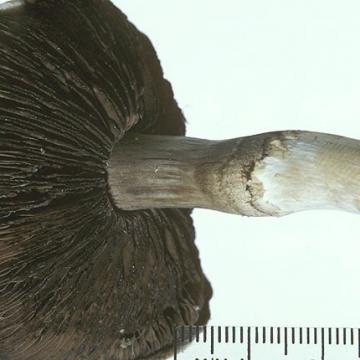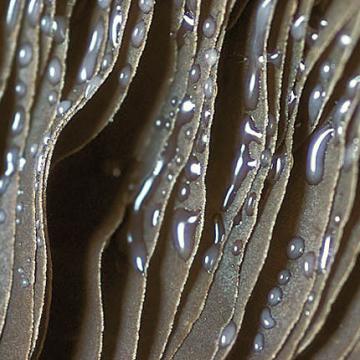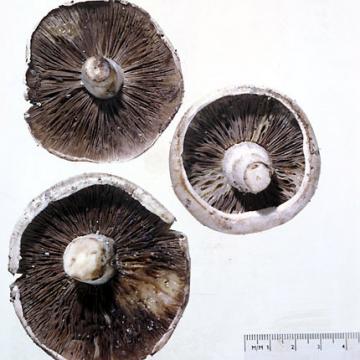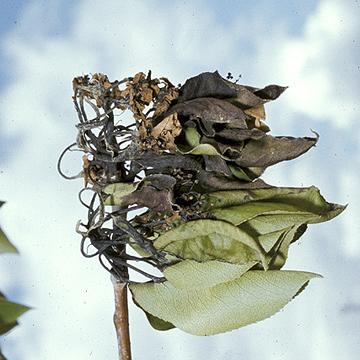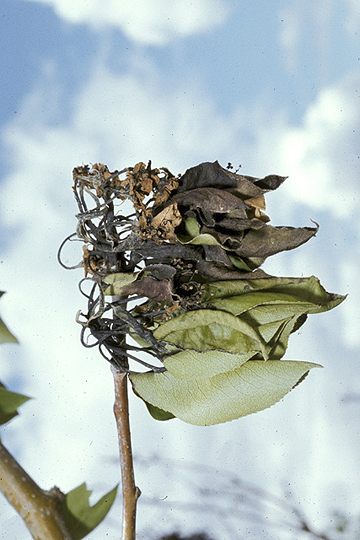DISEASE: Bacterial blast
HOST: Pear
The bacterium infects all flower parts and may spread and kill the entire spur.
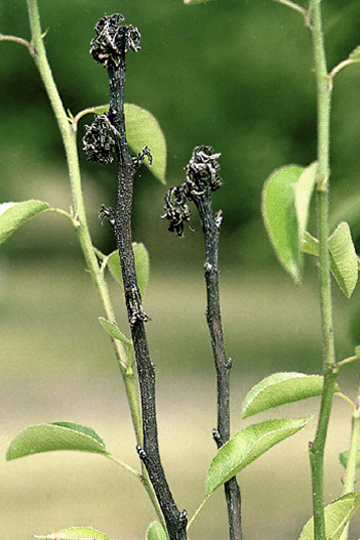
Bacterial blast | Pear
DISEASE: Bacterial blast
HOST: Pear (Pyrus communis)
PATHOGEN: Pseudomonas syringae pv. syringae
SOURCE: W. Sinclair
DISEASE: Bacterial gall
HOST: Wisteria (Japanese wisteria)
Multiple galls on trunk.
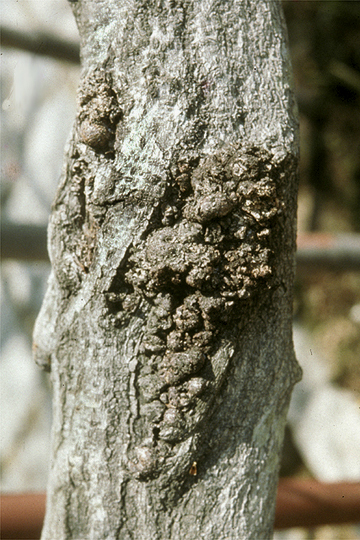
Bacterial gall | Wisteria (Japanese wisteria)
DISEASE: Bacterial gall
HOST: Wisteria (Japanese wisteria) (Wisteria floribunda)
PATHOGEN: Pantoea agglomerans pv. millettiae
PATHOGEN SYNONYM: Erwinia herbicola pv. millettiae
SOURCE: M. Goto
DISEASE: Bacterial gall
HOST: Wisteria (Japanese wisteria)
Gall on branch.
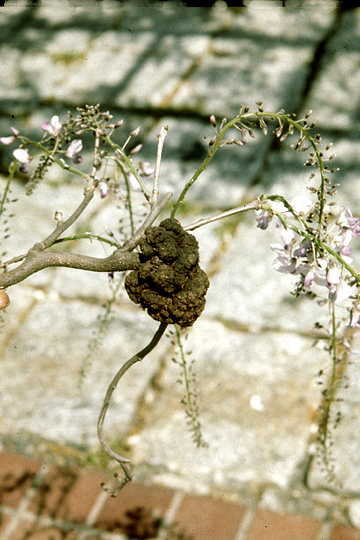
Bacterial gall | Wisteria (Japanese wisteria)
DISEASE: Bacterial gall
HOST: Wisteria (Japanese wisteria) (Wisteria floribunda)
PATHOGEN: Pantoea agglomerans pv. millettiae
PATHOGEN SYNONYM: Erwinia herbicola pv. millettiae
SOURCE: M. Goto
DISEASE: Brown blotch
HOST: Mushroom
Mushrooms with rotted, brownish discoloration of infected areas.
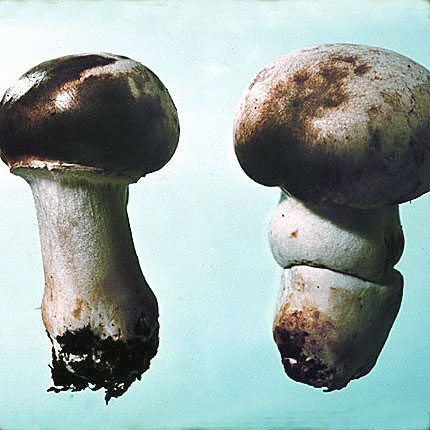
Brown blotch | Mushroom
DISEASE: Brown blotch
HOST: Mushroom (Agaricus campestris)
PATHOGEN: Pseudomonas tolaasii
SOURCE: J. Young
DISEASE: Crown gall
HOST: Pear
Crown gall of pear rootstock.
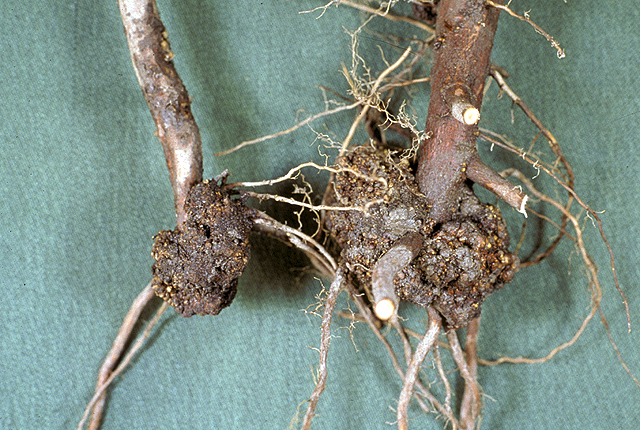
Crown gall | Pear
DISEASE: Crown gall
HOST: Pear (Pyrus communis)
PATHOGEN: Agrobacterium tumefaciens
PATHOGEN SYNONYM: Rhizobium sp.
SOURCE: H. Sawada, M. Goto
DISEASE: Drippy gill
HOST: Mushroom
Drippy gill is characterized by small dark spots on gills with drops of bacterial ooze at the centers. Severe infection results in slimy areas and collapse of gills.
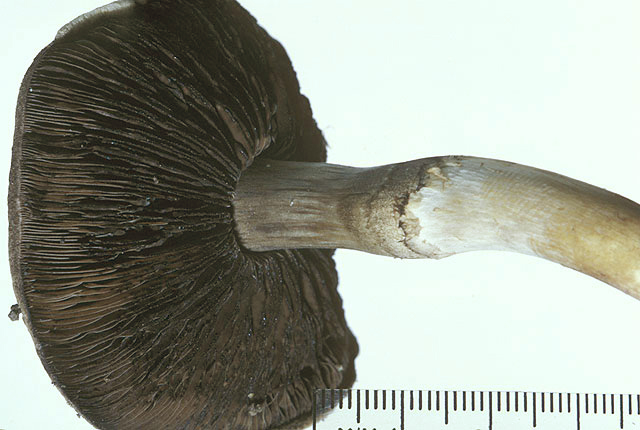
Drippy gill | Mushroom
DISEASE: Drippy gill
HOST: Mushroom (Agaricus campestris)
PATHOGEN: Pseudomonas agarici
SOURCE: J. Young
DISEASE: Drippy gill
HOST: Mushroom
Close-up of infected gills with bacterial ooze.
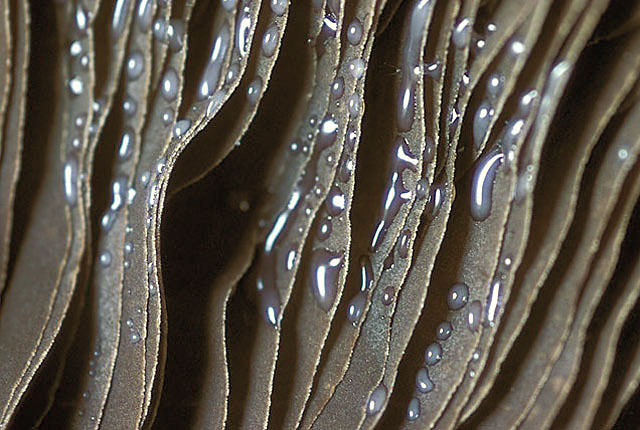
Drippy gill | Mushroom
DISEASE: Drippy gill
HOST: Mushroom (Agaricus campestris)
PATHOGEN: Pseudomonas agarici
SOURCE: J. Young
DISEASE: Drippy gill
HOST: Mushroom
Another view of small, dark spots on gills.
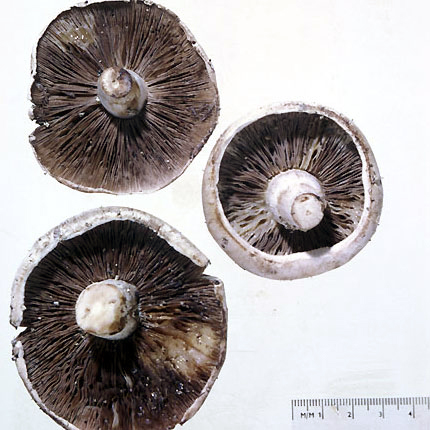
Drippy gill | Mushroom
DISEASE: Drippy gill
HOST: Mushroom (Agaricus campestris)
PATHOGEN: Pseudomonas agarici
SOURCE: J. Young


